When visiting japan you may find yourself immediately attracted to the futuristic and electronic megacity attractions that japan has developed and produced.
There are so many beautiful and storybook-like historical towns in appearance. It is the history and meaning behind these that the following exploration covers well preserved and incredible areas across Japan that give us a window into a time that existed long ago.
Kurashiki Okayama
Kurashiki was a financially well functioning and prosperous town as a result of its position in terms of export and importation.
Their land is in the perfect position to benefit from the river of which directly streams towards the Seto Inland Sea.
To this day we still see the structures, shops, and buildings from the old Edo period, where it is evident that these buildings were formed around the river for practicality and purpose.
Kurashiki Location Via Google Maps
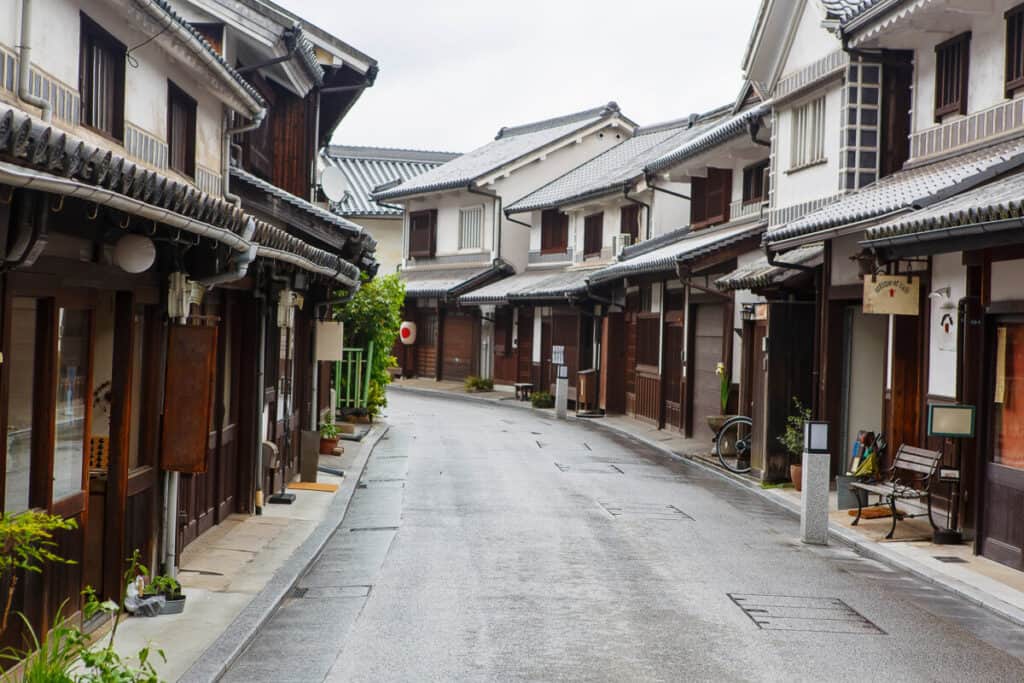
A beautiful town for tourists and incoming travelers to walk through, with a sense of entering an enriched and peaceful environment.
The river still allows for boats and canoes to navigate, posing as ferries for tourists upon the ancient waters. Beauty through and through, from the outside-in. Many of these establishments are now museums, art galleries, and exhibits.
The archaeological museum of the Kurashiki Town is established within what used to be a rice granary. It now holds ancient artifacts, excavated and discovered which belonged to/originated during the times of the ancient Kibi Region.
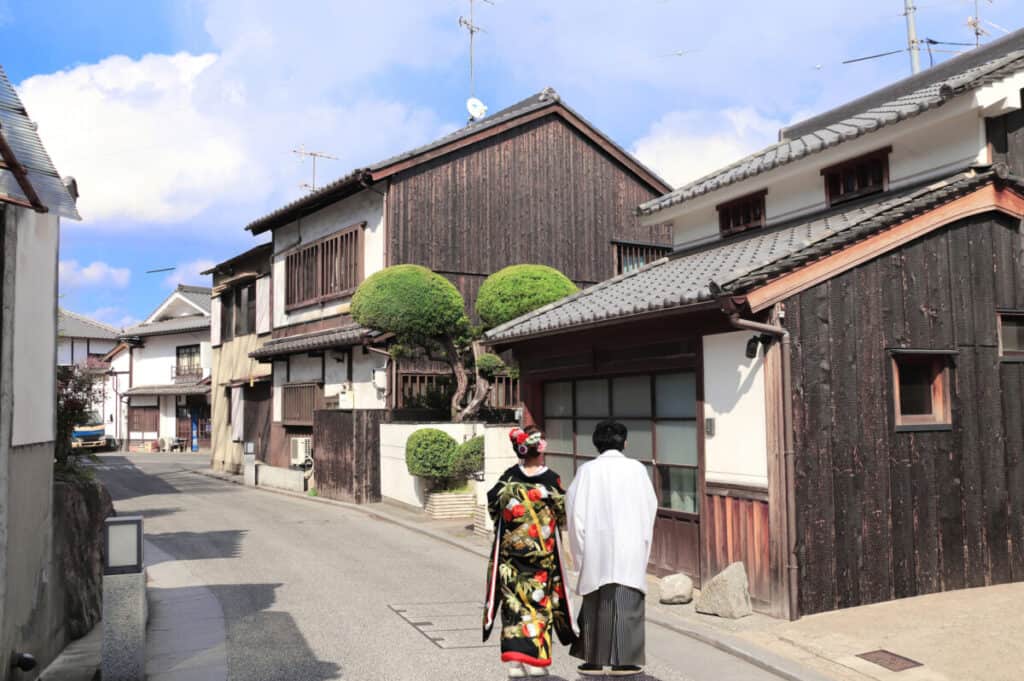
The Ohara Museum of Art displays many European and Japanese art pieces. Notably, works from European artists that are rightfully renowned, like Monet and El Greco.
Just a little bit away from that Ohara Museum is where you will find the Japan Rural Toy Museum of which exhibits toys (from the 1600s to the 1800s) within the country of Japan.
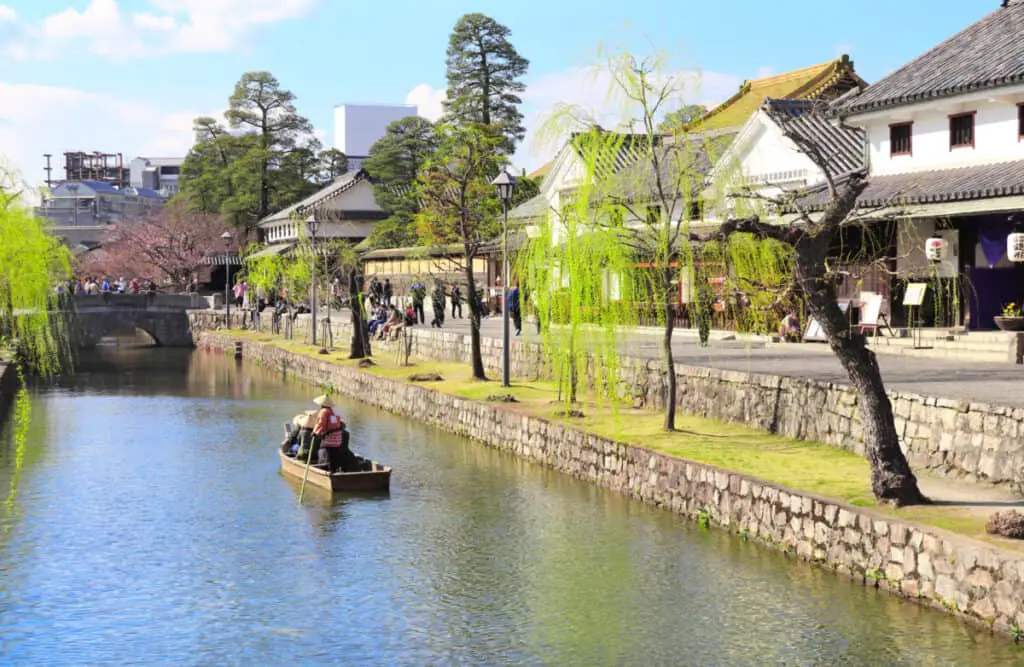
This area is most beautiful when seen as sunset, with the way the river reflects that light and the shadowy, mystical ambiance the town creates one the sun is setting behind it.
Truly a town you must see for yourself in person to truly appreciate.
Asuke Aichi
Prepare to be immersed in the fallen maple leaf trees from which have grown for centuries in Asuke, Aichi.
The people who have resided in and lived generationally within Aichi have worked hard to keep the area beautiful and environmentally conscious.
The best time to visit this area is during the fall, October through to November where the leaves are vibrant and stunningly beautiful.
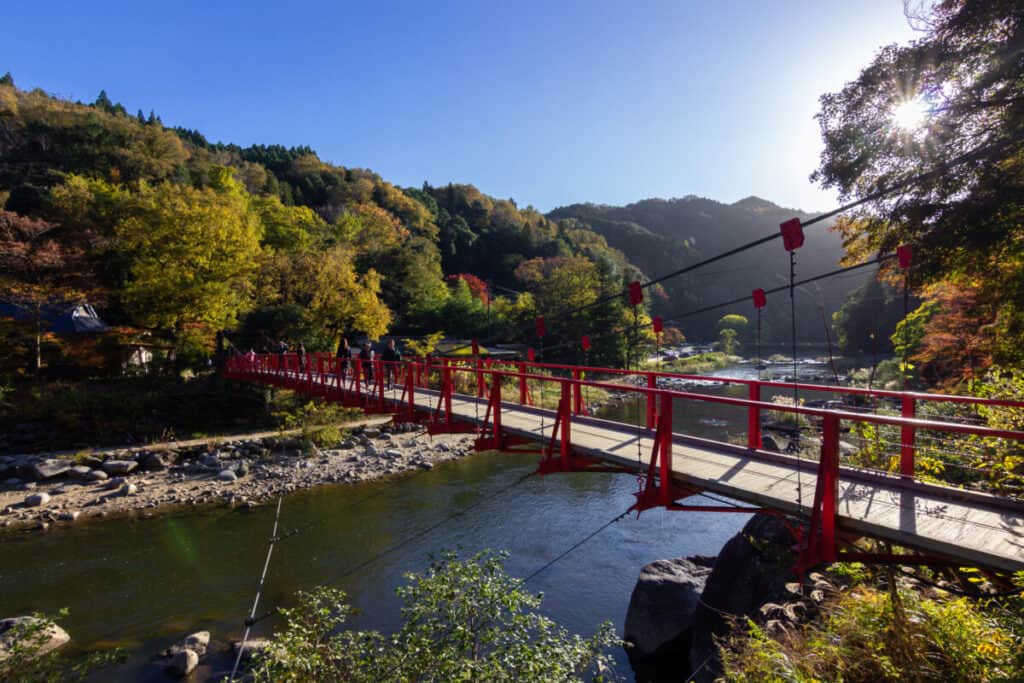
The Korenkei Maple Festival is held annually in the Korankei Gorge, where these mystical trees dazzle people of all backgrounds; collectively appreciating what nature has to offer even centuries forward.
There are many shopping areas and storefronts to visit, as well as roads to wander down. You’ll never be bored of what this place feeds your eyes in terms of both fascination and aesthetic pleasure.
Kakunodate Akita
This city has stood proudly since 1620, as a city where samurais, merchants, and other residents would reside. historically speaking, this was a city where people would live in and participate from merchant districts.
And so, you can now walk down the same paths, alleyways, streets, and land overall that real-life samurais walked down centuries before you.
Kakunodate Location Via Google Maps
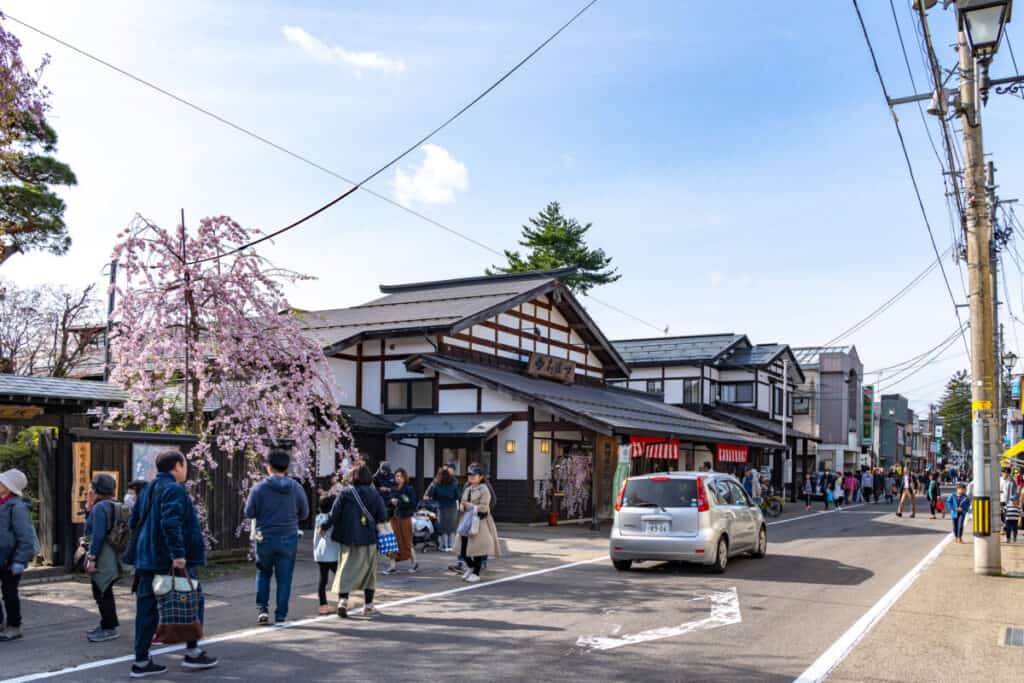
Approximately 80 samurai families lived in this district and so, a majority of the establishments have been well maintained for tourists and incoming persons alike.
The most beautiful time of the year to visit this city is during the springtime! In fact, there are annual Sakura Festivals that surround the immaculate and whimsical cherry blossom tres and their annual blooming.
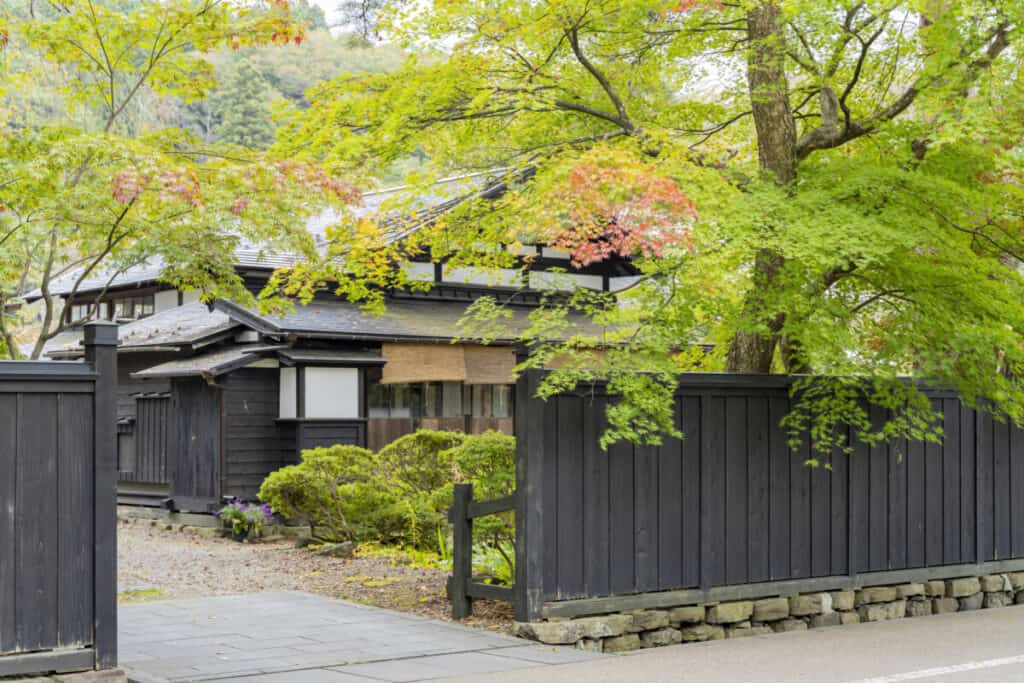
Kakunodate Location Via Google Maps
You’ll pass under branches of these trees as they hang over and upon the smoked wooden roofs of the old samurai homes and establishments.
Higashichaya, Ishikawa
The land was previously used to house and allow for vibrant events for geisha and their clients of the geisha to reside. the Higashichaya area is notably one of the largest of the four main geisha towns throughout Japan.
Higashi Chaya Location Via Google Maps
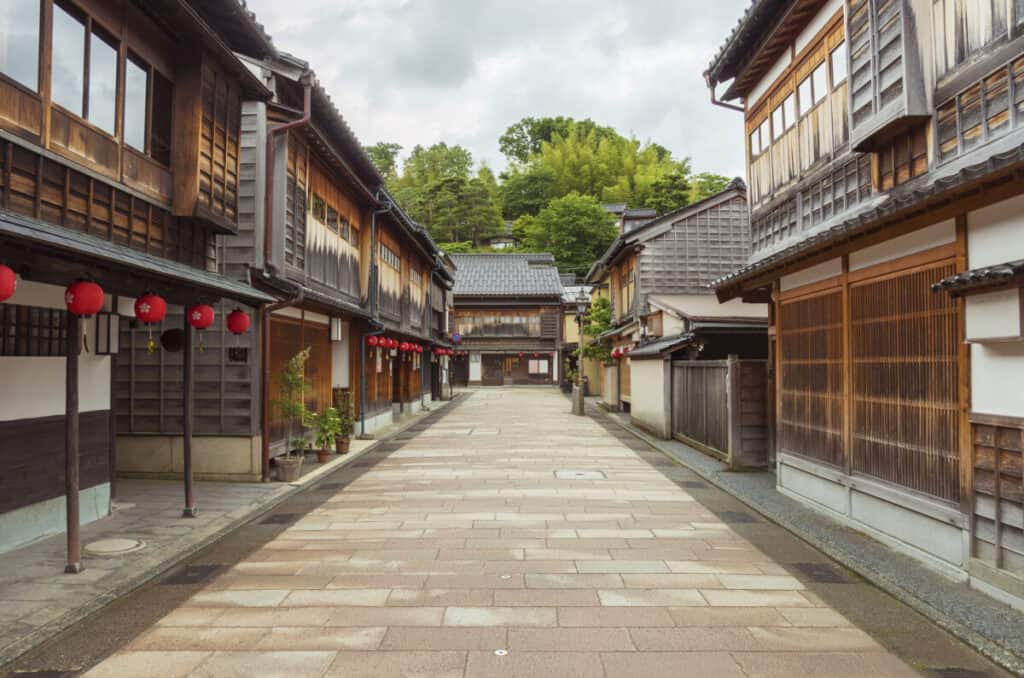
On Saturday’s they host events based around the history of the town for tourists to indulge in. so give the gift of adventure and imagination to yourself and visit as many storefronts, side streets, and nooks as you can on your visit.
You’re bound to learn new things and witness the sort of environment we once thought was only possible through television and storytelling. Immerse yourself.
Mino, Gifu
The city of Mino, Gifu has prospered and evolved throughout nearly 1300 years. This is as a result of the influence, pieces, and practices that the Washi (paper) Artists and Artistans so skillfully and masterfully have produced.
Mino Gifu Location Via Google Maps
From agriculture to manufacturing this city has never missed the mark. Their architectural designs are beautiful as well as logical and efficient.
Merchant Districts
Throughout the Edo period, the merchant districts were considered to be a lower state in consideration of the four main social castes. Despite this statement, the merchants themselves would become prosperous and wealthy exponentially.
Merchants would live in specific districts in order to benefit appropriately, constructing shops in rows and organized factories and warehouses.
Kawagoe Warehouse District
Over twelve large buildings and are still in existence within the style of the Edo Period. They’ve been maintained with a certain level of respect and upkeep as it is considered to be Kawagoe’s Main Street within the city itself.
Kawagoe Warehouse District Location Via Google Maps
These buildings are now stores, shop fronts, and restaurants.
Takayama Old Town
The winding and wonderful streets of Takayama’s Old Town feature traditional structures and stores, with organic food and products on display.
There are also some homes that were previously designed for merchants that you can enter as they are now modern public establishments.
Takayama Old Town Location Via Google Maps
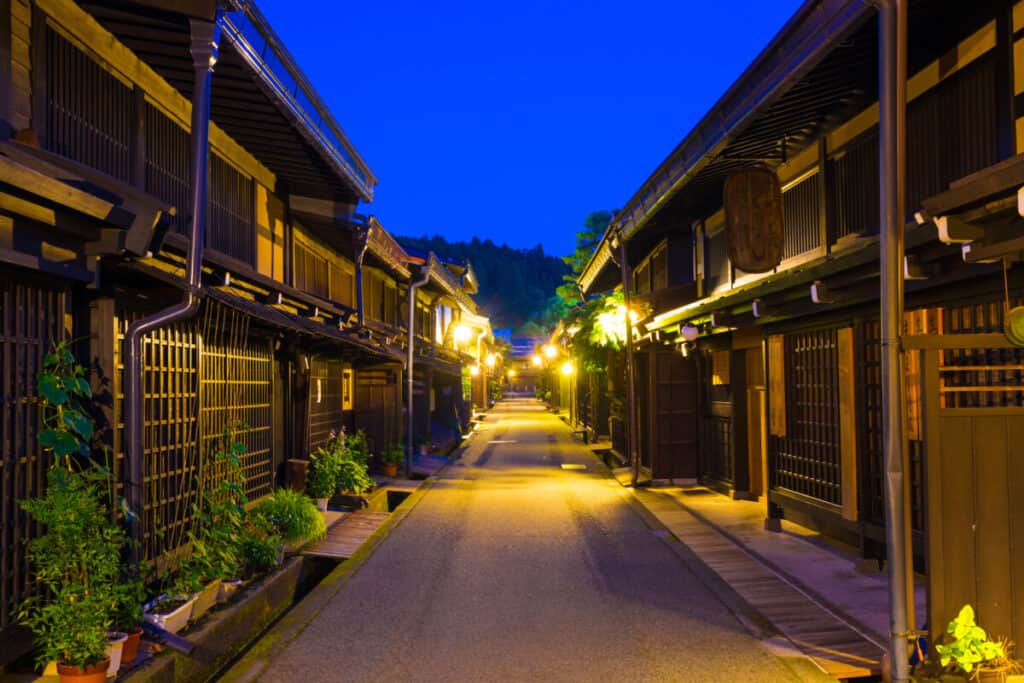
Samurai Districts
Many cities throughout Japan had established a number of monuments and structures to develop what we refer to as Castle Towns.
The samurai districts would surround the castles as a means of protection for the royals and be thus considered to be of the highest social caste at the time of the Edo Period.
They were best known for their aesthetically pleasing and tasteful homes.
Kunisaki Peninsula Kitsuki
A very individualistic and infatuating place of which holds two previous samurai districts. They can be seen resting marvelously upon hills that feature a merchant district in the middle of the two lands.
This district is by far one of the most well-regarded and intriguing samurai districts within all of Japan.
The old home looks like what would have been created from an ancient painting, with detailed and finely structured homes accompanied by lush greens and town lights.
Kunisaki Peninsula Kitsuki Location Via Google Maps
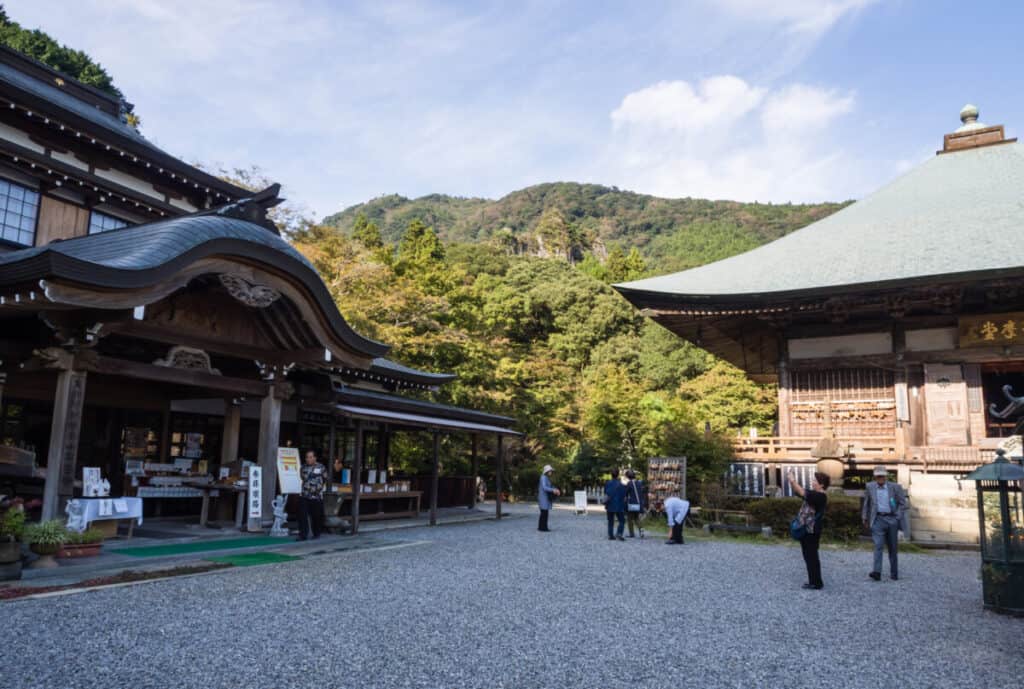
Usuki Samurai District
This district is a quaint and cozy little town, from which samurai families lived for centuries.
Usuki Location Via Google Maps
Don’t let its small size fool you, however, as it is an amazing area perfect for photos and videos, or simply exploring what the area has come to be over time.
Geisha Districts
The traditional geisha districts feature wooden tea houses which the geisha would perform in.
Kyoto Gion District
The Gion Hanami-Koji Street of Kyoto is where some of the most beautiful buildings from tea houses to restaurants remain today. It is not uncommon to see modern-day geisha in this area.
The town overall is beautiful and gives off an artistic and spiritual vibe; welcoming of tourists and visitors. It is advisable to visit at night for the lights and the way in which the colors and life of the city come into fruition in the evening.
Kyoto Gion District Location Via Google Maps
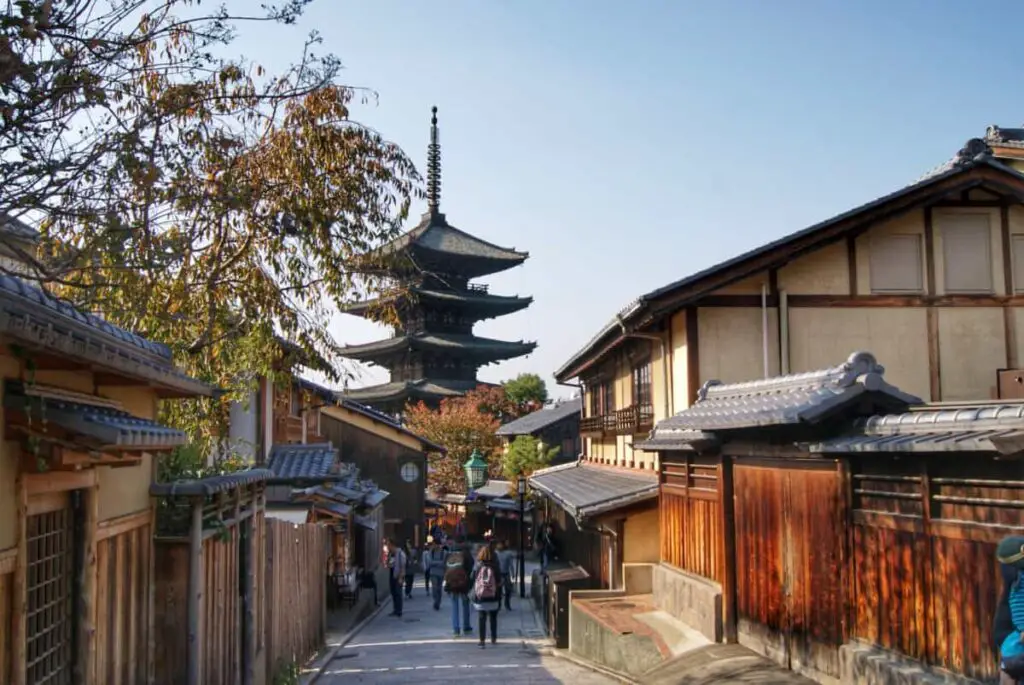
Post Towns
Post Towns were constructed throughout a majority of the country’s important roads and primary highways, which were built to serve and aid travelers at that time.
Kiso Valley Tsumago
The Kiso Valley; where some of the most beautiful and well-designed posts and establishments stand to this day.
A vast majority of these buildings originated in the Edo Period, originally for the purpose of holding ryokan to stay, restaurants, and shop fronts.
Kiso Valley Tsumago Location Via Google Maps
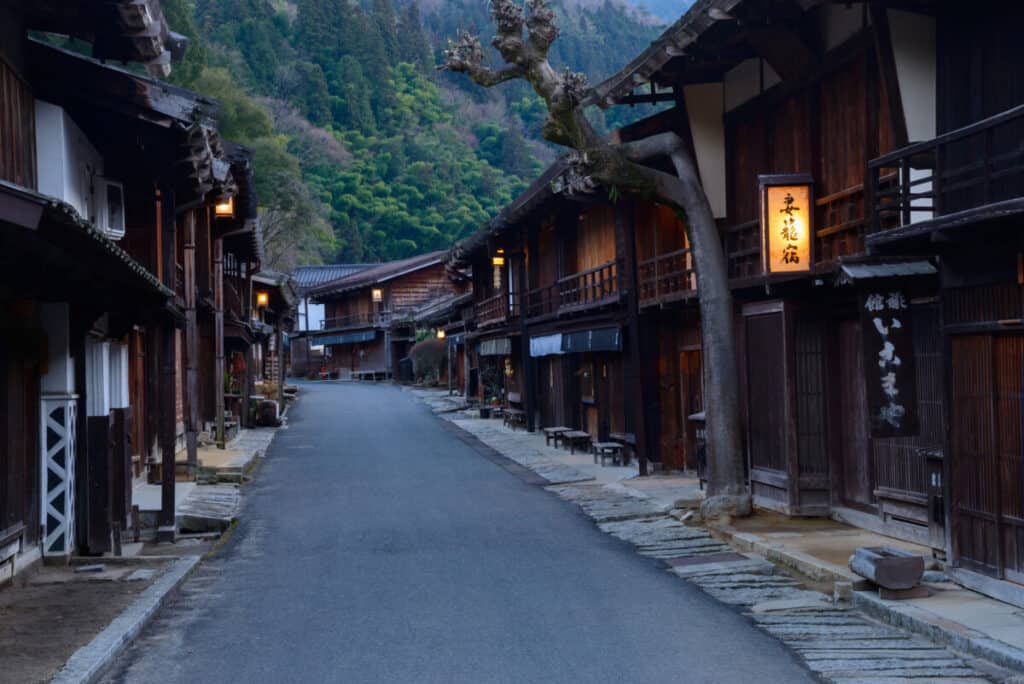
Aizu Ouchijuku
The way the town flows continually in a unified and traditional manner is enough for a person to fall in love with the Ouchijuku post town. This town was built throughout a path to Aizu and Nikko during the Edo Period.
Aizu Ouchijuku Location Via Google Maps
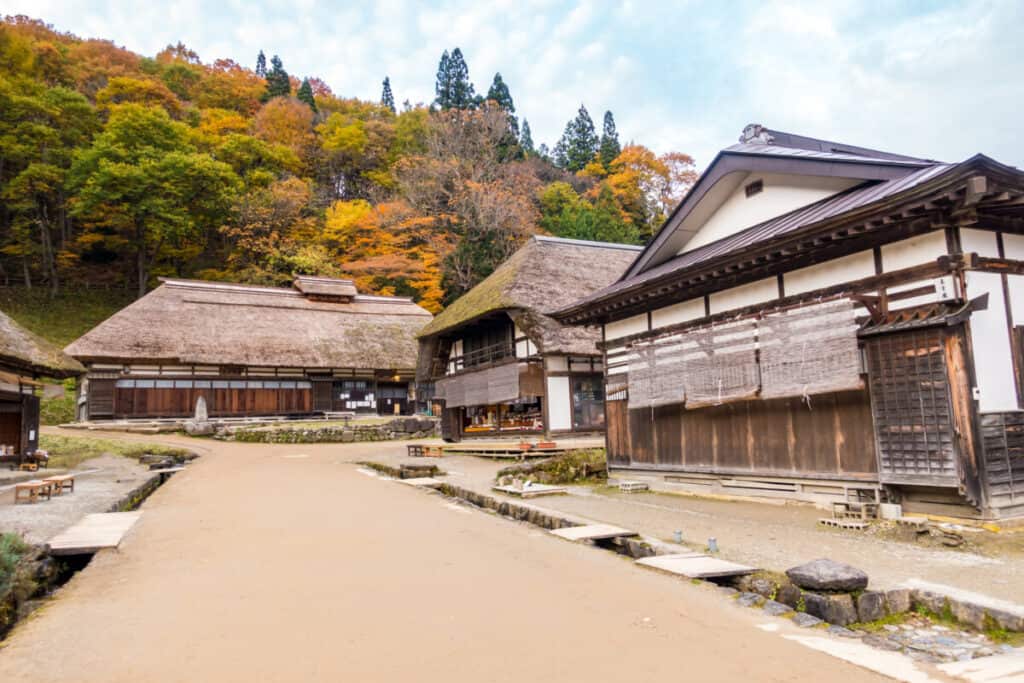
Farming Towns
Most of the people who lived in Japan throughout the Edo Period were farmers, who lived in the homes and farmhouses we see in villages that stand today.
Here are some of the most beautiful villages that remain populated and maintained.
Shirakawa-go Ogimachi Village
The Ogimachi Village is the largest village within all of the Shirakawa-go area. There are many old farmhouses that you can explore and just within the area there is the Open-Air Museum.
Walk through the valleys and stay the night at a rustic Japanese farmhouse.
Shirakawa-go Ogimachi Village Location Via Google Maps
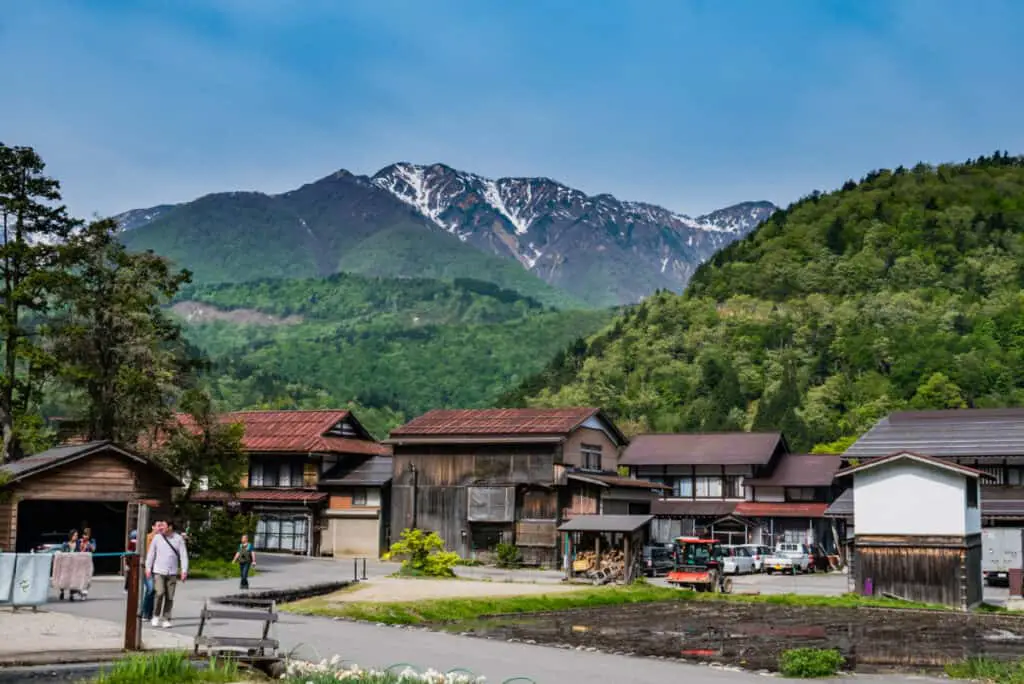
Gokayama Ainokura Village
This village is considerably smaller than the aforementioned, but don’t let its size stop you from visiting. The Ainokura Village looks like something out of an old impressionist painting.
Gokayama Ainokura Village Location Via Google Maps
There are a number of old farmhouses that are now establishments for tourists; Minshuku, being places to stay for a period of time.
Port Town
Kukuyama Tomonoura
Last but not least, the port town of Tomonoura had to be added to this list.
Kukuyama Tomonoura Port Town Location Via Google Maps
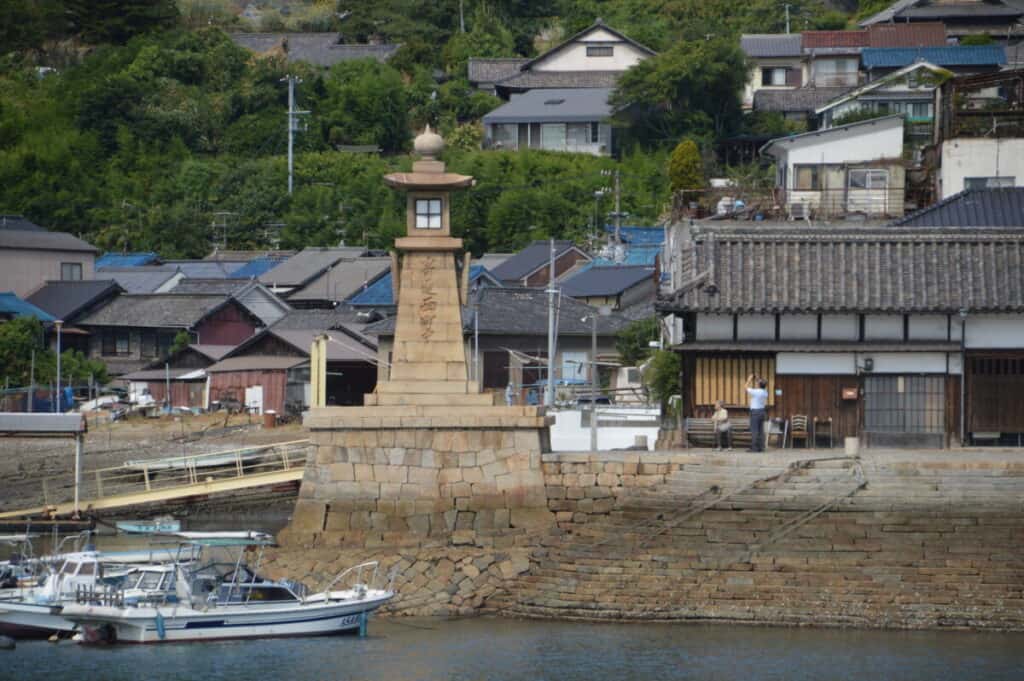
The structures that reside there are strategically placed to oppose the Seto Inland Sea; thus making the port a beautiful and prosperous location to participate in importing and exporting resources throughout many time periods.










